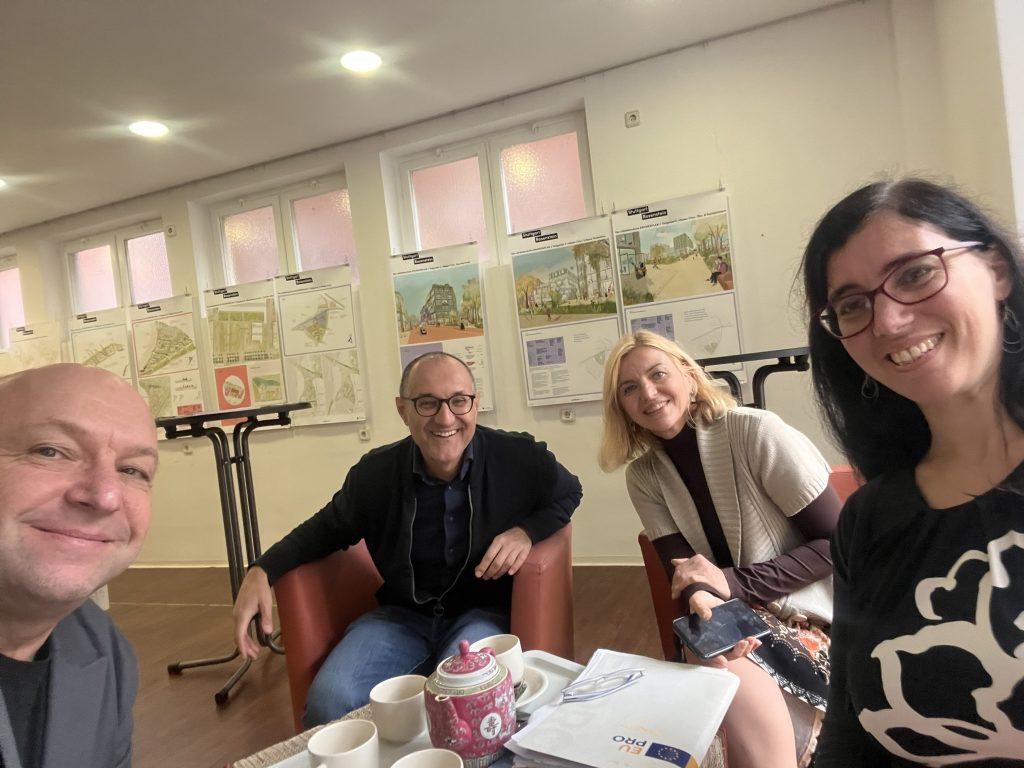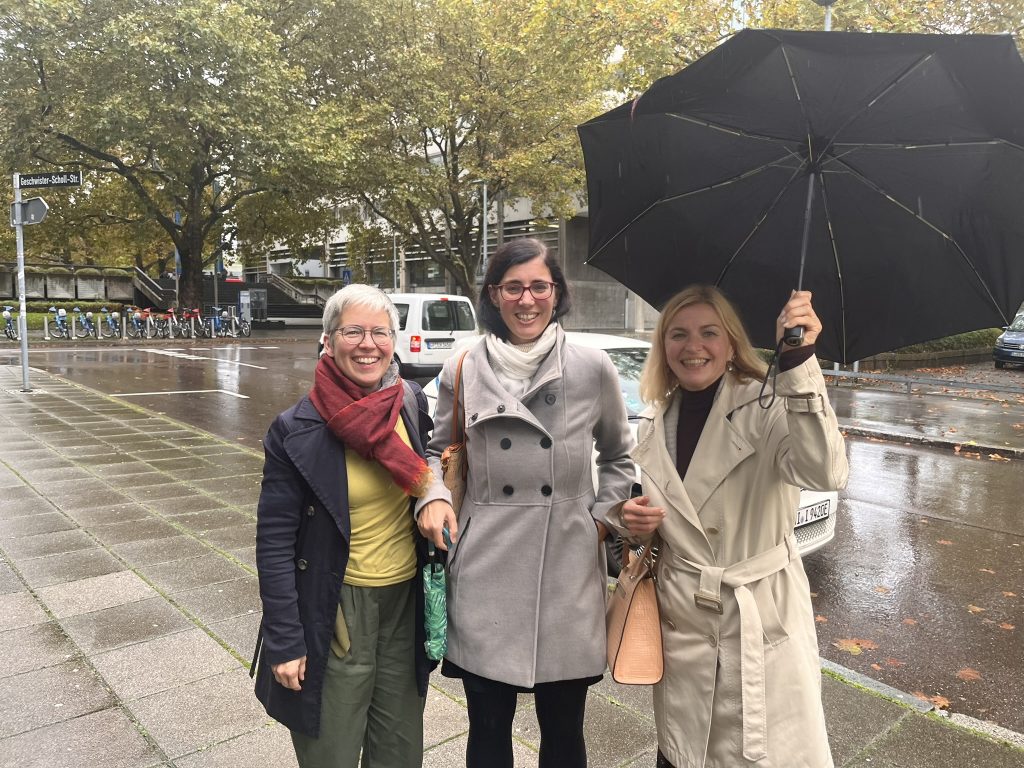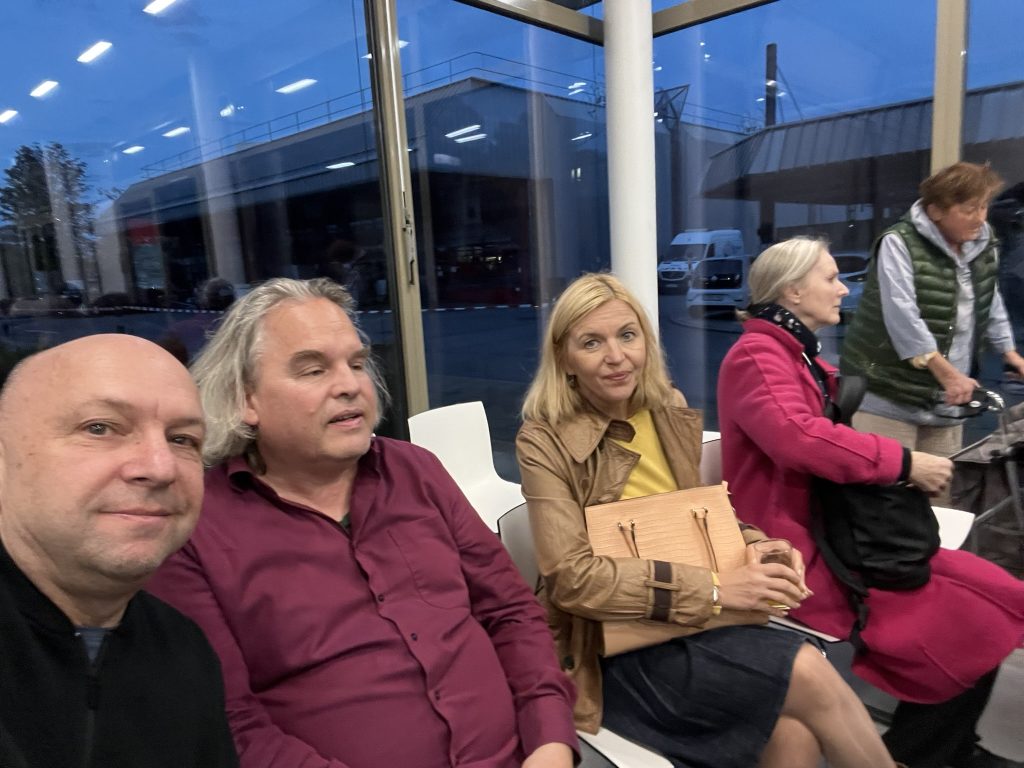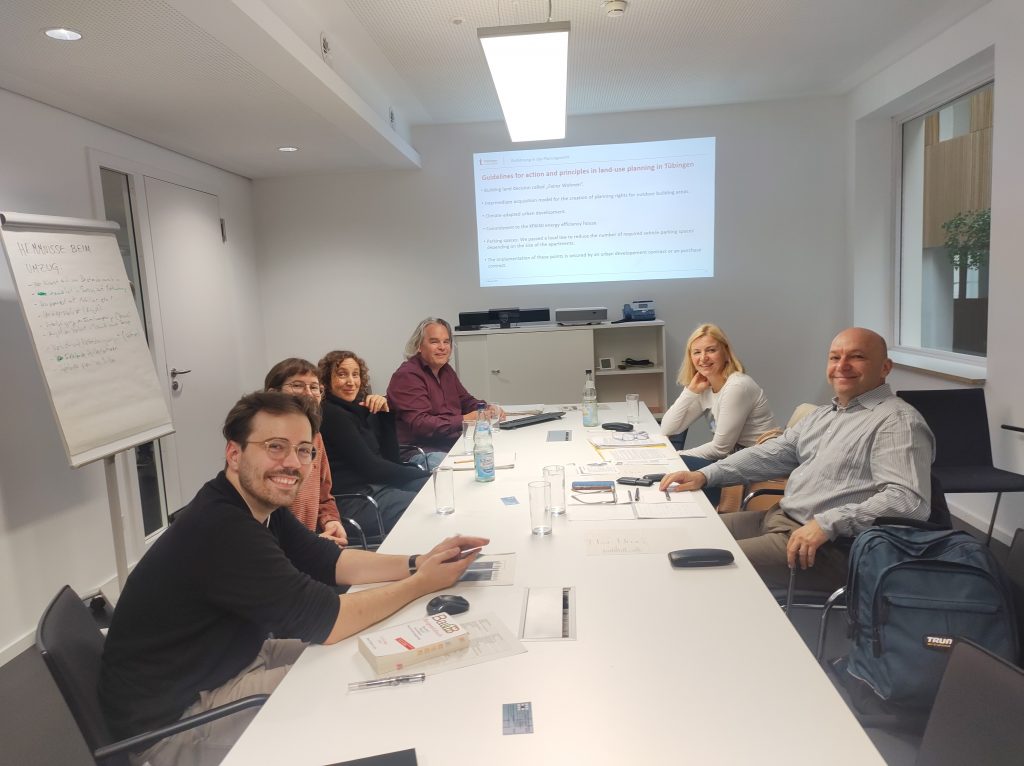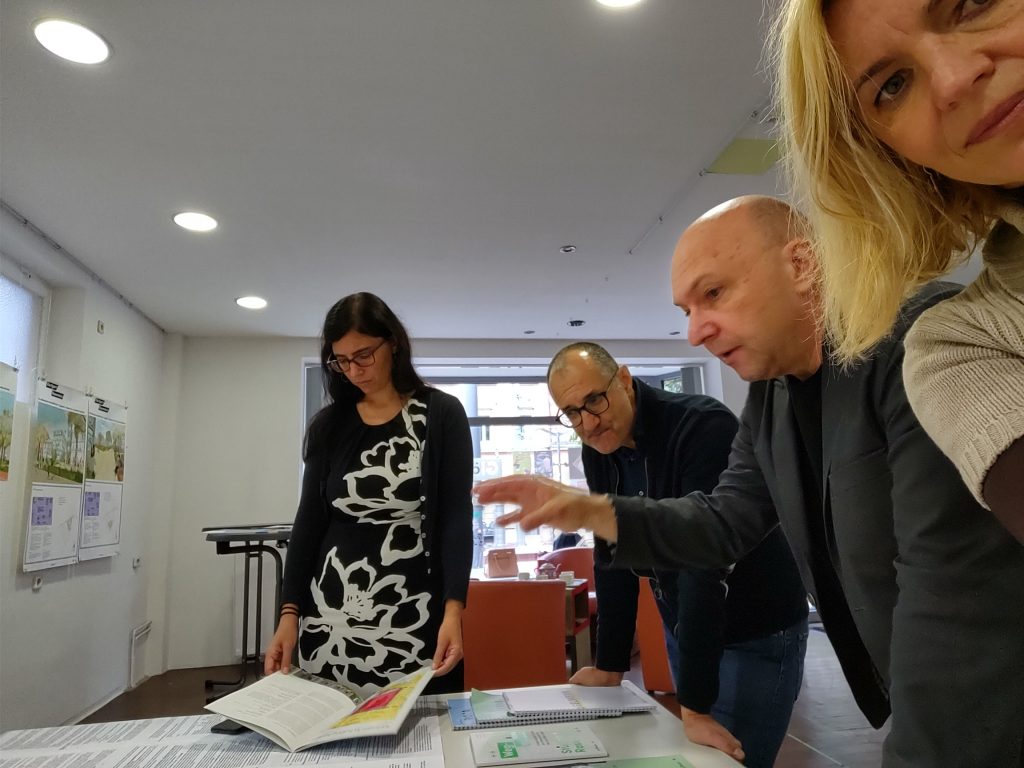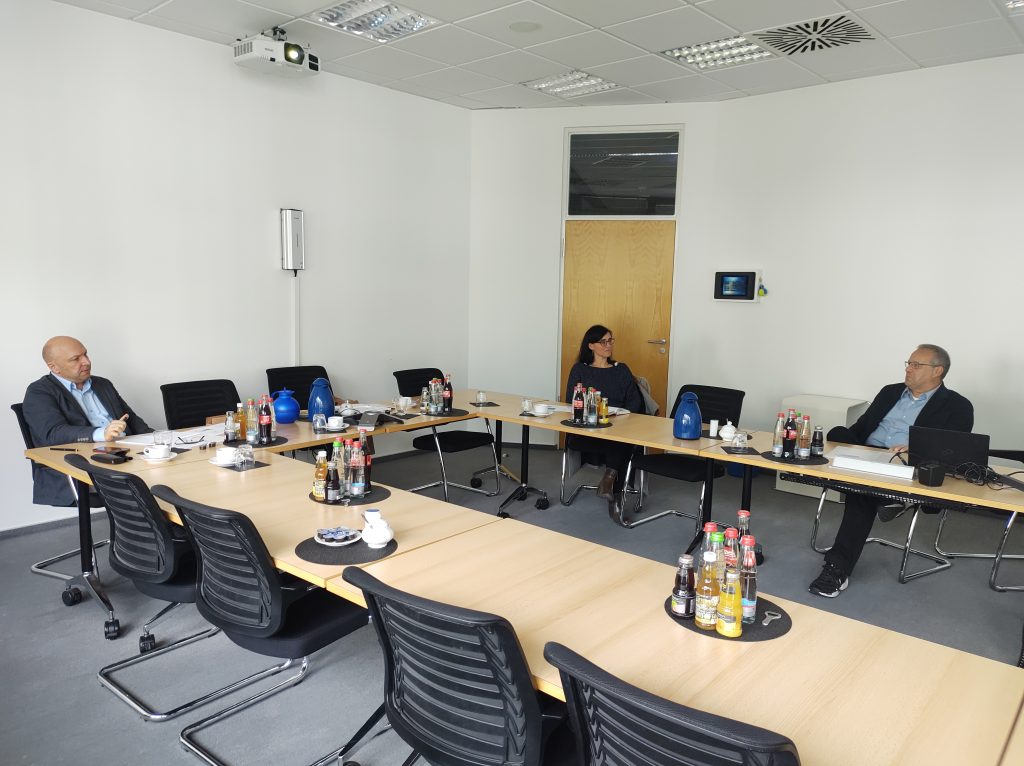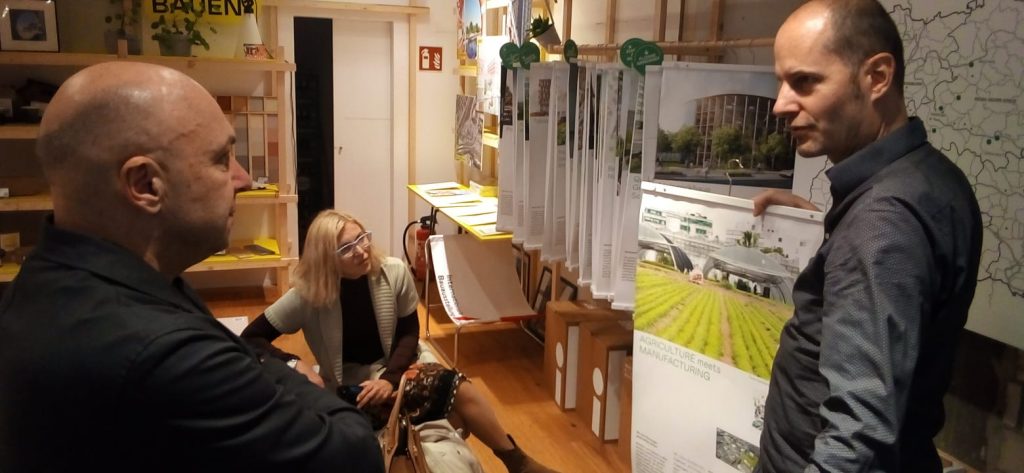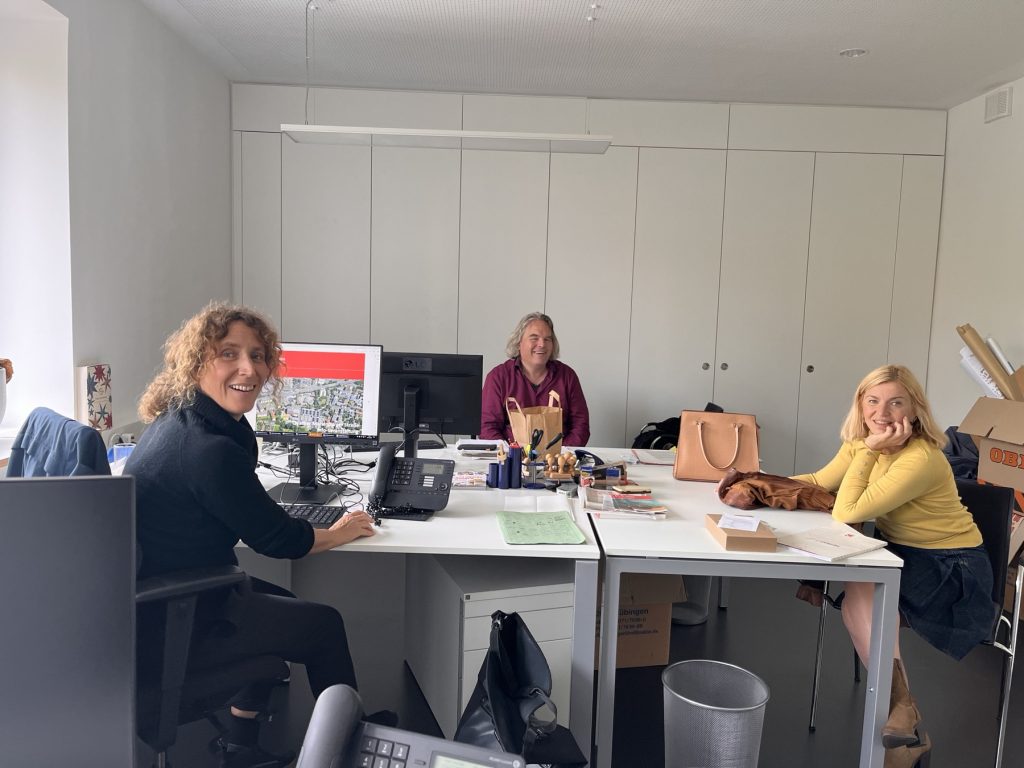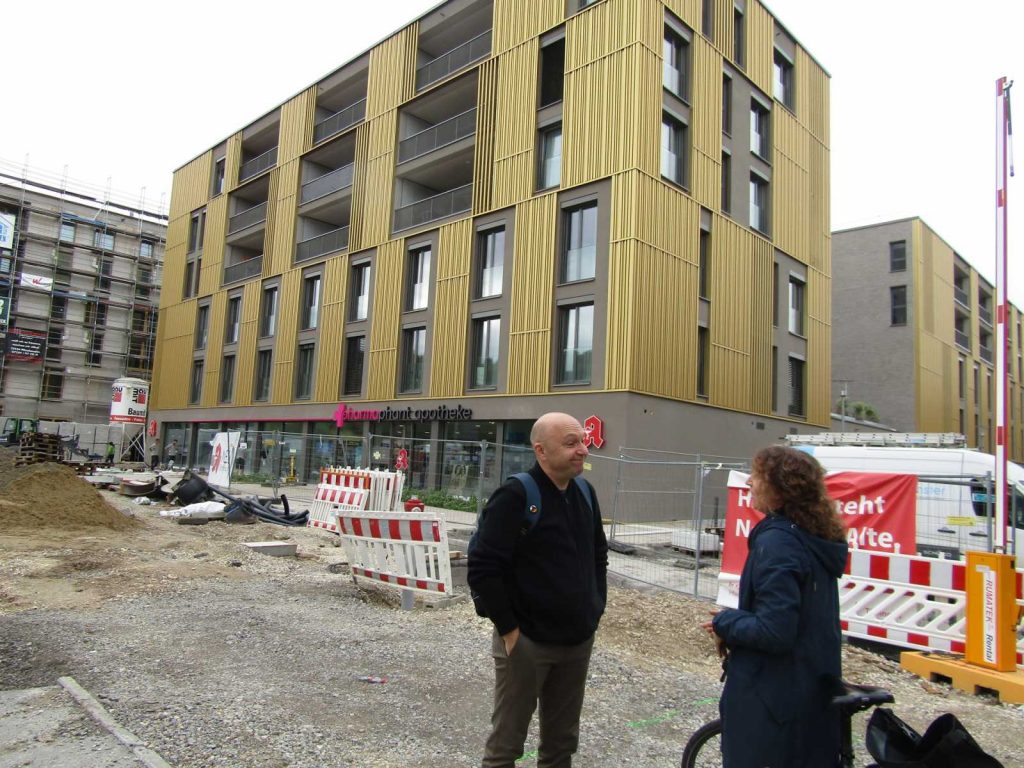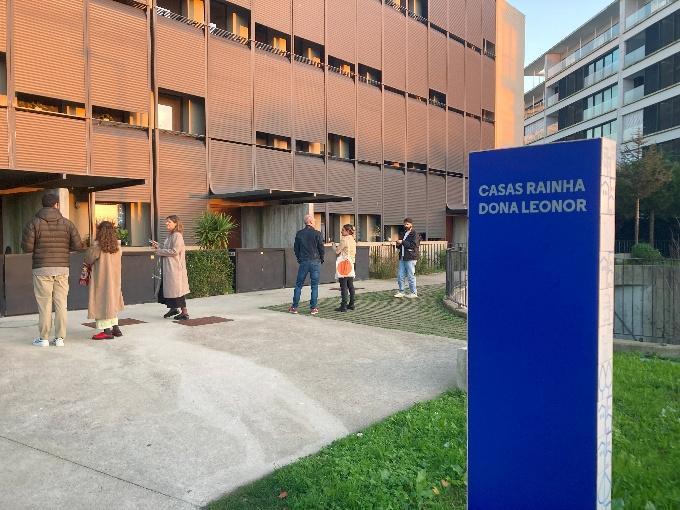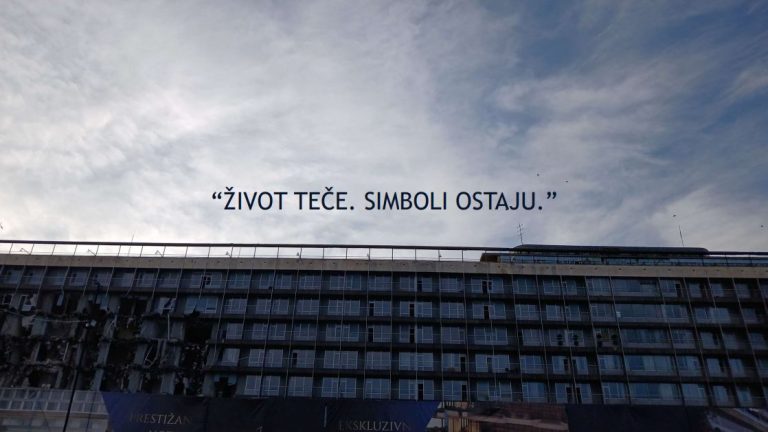By Ivana Momic and Aleksandar Jevtic
Introduction: As a step towards the exchange of knowledge and dissemination with partners in Germany, the Serbian association of Planners visited the Municipality of Tübingen, Tübingen, Universitätsstadt – Public and Housing and the Department of International Urbanism at the University of Stuttgart. SUPA wanted to understand better the German system of spatial and urban plans that define general land use, land use plans and conditions for their implementation.
We began our visit in Tübingen in Technisches Rathaus with Julia Hartmann, Axel Brukhardt and three young urban planners from the Urban Planning Department: Caroline, Mary and Moritz Nuber, who gave us an interesting and enthusiastic presentation introducing the planning system in Germany. They presented general information about the plans, as well as specific, very complex Preparatory Land Use Plans, Local Development Plans and procedures for their adoption.
The next day, Els Keunen organised a fulfilling and instructive day in Stuttgart. First, we met her colleague, Dr. Ing. Dan Teodorovici, an architect with extensive knowledge about architectural history as well as the history and theory of architecture and urbanism. He gave us an overview of the planning of Project Rosenstein. We also saw the Rosenstein exhibition in the city center. The project was conceived as the future main railway station; 85 hectares will be freed up in the middle of the city center by dismantling the current tracks. The concept of the mixed city has shaped it: living, working, learning and cultural experiences will flow seamlessly into one another, no longer being viewed separately. This creates a lively place that combines needs, shortens routes and creates a new form of identification.
At the University of Stuttgart, we met Prof. Dr. Astrid Ley, Chair of the Department of International Urbanism, who delighted us with her knowledge, vitality and energy.
Later on, we visited IBA spaces and exhibitions. The International Building Exhibition 2027 (IBA ’27) set out six years ago with the task of developing exemplary construction projects for the economic, social and ecological transformation of the Stuttgart Region. With intriguing and courageous building projects, the International Building Exhibition wants to show how people can live and work together in the Stuttgart region in the future. Launched in 2017, the IBA’27 team works together with administrations, investors, experts and local people to implement the best ideas.
On 10 October, we visited Weissenhof Museum in the Le Corbusier House Rathenaustrasse with Elsa’s colleague from the University, Markus Vogl, who also works as an urban planner; he was our guide. The museum was built in 1927 by the architects Le Corbusier and Pierre Jeanneret, who designed two semi-detached houses for an exhibition entitled Die Wohnung (The Dwelling) for the Deutscher Werkbund. This building has been the location of the Weissenhof Museum since 2006. In 2016, the building was listed as a UNESCO World Heritage Site along with the neighboring single-family dwelling by Le Corbusier.
In the afternoon we had an appointment with Mr Thomas Kiwitt, managing Director, Head of Planning from the Stuttgart region (Verband Region Stuttgart) who amazed us with his authority and immediacy as well his friendly approach. His presentation was about Metropolitan Governance in the Stuttgart Region, organization, policies and challenges.
During our secondment in Tübingen we had a lot of tours of recent development projects – both on construction sites, and in other areas in the city. We also saw the new “technology park” where the city has been developing plots for the biotechnology and AI businesses that shape Tübingen’s economy today.
On 11 October in the evening, a public information event took place where the planners explained the current state of play and plans for the new development “Marienburger Straße”, at Stadtwerke Tübingen, to the public. The event was well attended by residents, as well as experts who worked on the plan, potential investors and mayors. It was interesting to see how the city deals with public information about planning issues. This really helped us to make the comparison with similar public information events in Serbia, leading us to the conclusion that the public in Germany is more involved, but also that the procedure takes longer.
Staying in southern Germany provided us with a great experience as well as deepening our knowledge about the planning system, in particular, within the two countries’ different social environments and historical contexts. We learned how to establish a foundation for social housing in urban plans and create opportunities for its implementation, as well as how to define social housing as a separate subtype in a residential area. We also learned that it’s crucial to decide whether the plans should include precise and clear conditions for social housing, requiring an exact percentage in relation to the household unit in the city, or whether they should be flexible both in terms of the location of social housing in the city itself (center or periphery) and in terms of the area to allocate for each resident.
Thanks again to Elsa, Julia and Axel for their hospitality and selfless sharing of knowledge.
